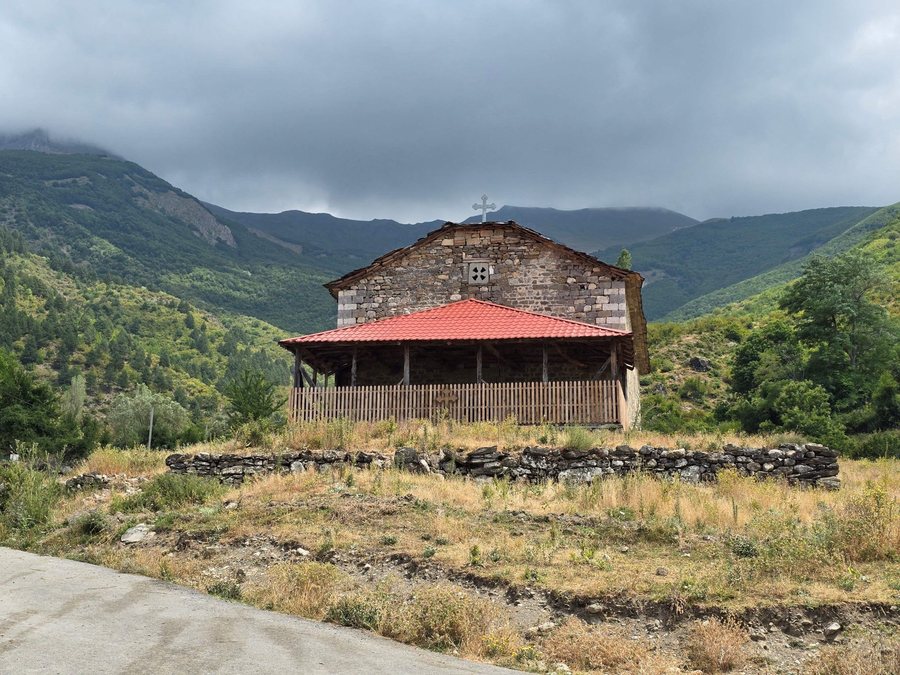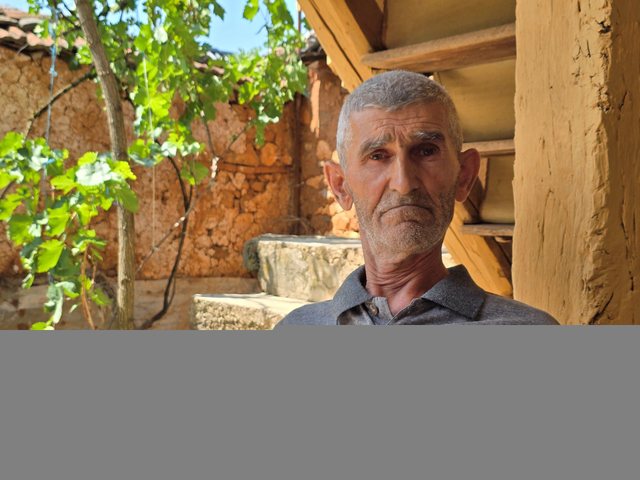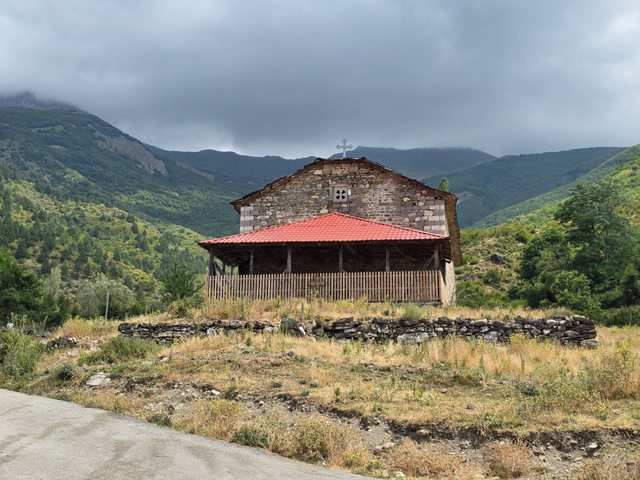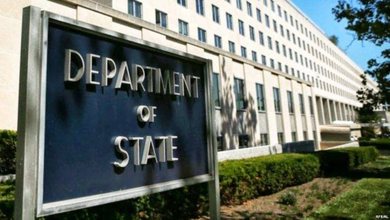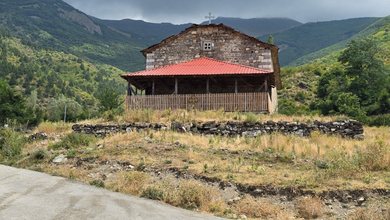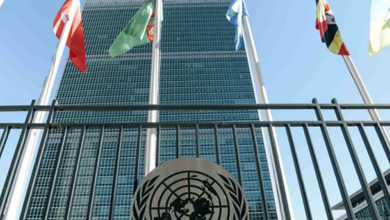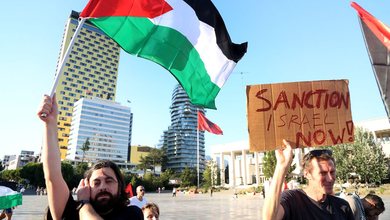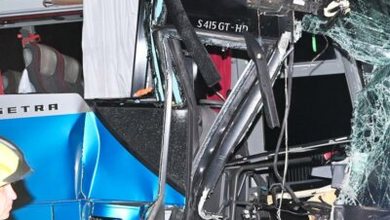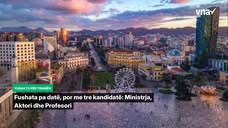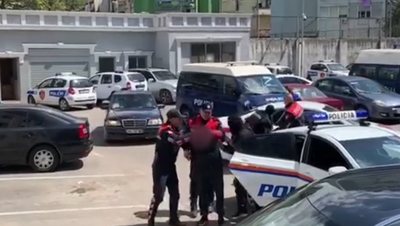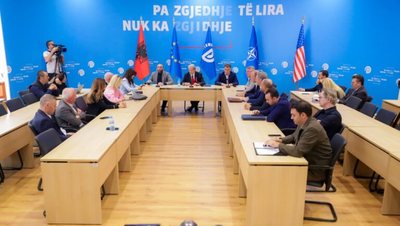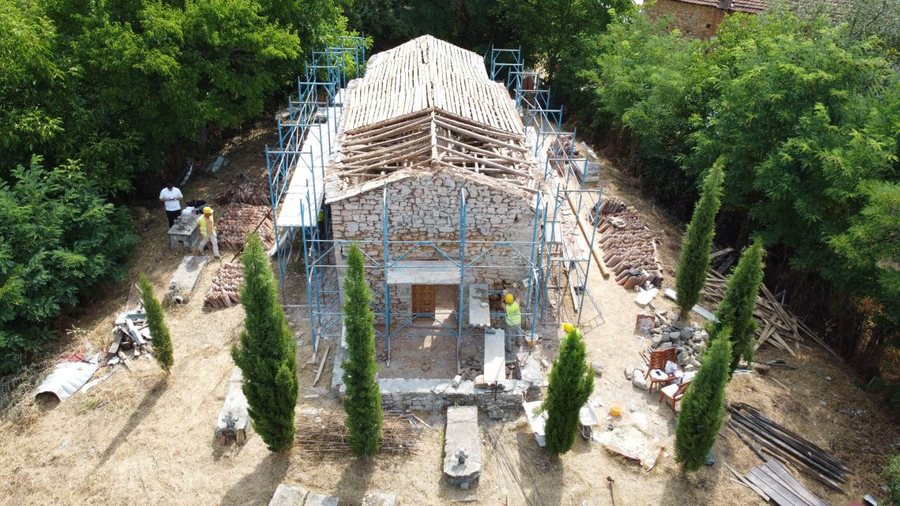
In the villages of Maqellara in Dibër, churches from the Byzantine period have survived thanks to the care of Orthodox and Muslim believers, inheriting the value of religious coexistence.
Amidst a gentle hill surrounded by trees in the village of Herbel in Dibra, a small stone building, once covered with tiles, appears amidst the greenery.
Residents know it as the Church of the Transfiguration, a first-class cultural monument in Albania, which has been preserved for centuries not only as an object of worship, but also as evidence of religious coexistence among the inhabitants of the area.
Herbeli and Kërçishti i Epërm are two villages in Dibra that still preserve churches from the Byzantine period, although only the last two Orthodox families out of the seventy that were previously counted remain in the village.
One of them, Andon Postoli, tells BIRN that they have never left the church "alone", despite the strict ban on religion during the communist regime, thanks to the support of fellow villagers of the Islamic faith.
"I baptized my children secretly, at home. The fear was great, but we couldn't give up the tradition. I remember well when I closed the doors, so that no one would see us," recalls Postoli.
"We secretly guarded the church, even though it was badly damaged. Instead of taking care of it, the person assigned by the party didn't even come near, while a village lady did her job without being seen," he added.
His wife, Jonka Postoli, continues to take care of the village church. During the communist regime, she would secretly go to the church to light candles.
"On the feast of August 18, not only we Orthodox gather, but also the Muslims of the village. This is our common feast," says Jonka proudly.
For years, Andon and Jonka Postoli have been sending letters to Albanian institutions, requesting intervention to restore the damaged church. Alone in an apartment at the top of the village, they say they had found donors willing to help repair the church, but intervention was not allowed because the building had been declared a cultural monument.
Despite delays and red tape, Jonka says their prayers were heard and that the restoration of the Church of the Transfiguration is being carried out through a project of the National Institute of Cultural Heritage.
The interventions include the consolidation of the foundations, the restoration of the facades and cracks, as well as the preservation of the original ceiling elements and frescoes, which, although damaged, remain historical evidence. The investment of around 30 thousand euros aims to save a monument dating back to the 11th–12th centuries.
"If there was no intervention, a small earthquake would completely destroy it," says Gentian Molla, a technician for the company carrying out the restoration work.
History teacher Gazmir Sejdi considers the Church of the Transfiguration in Herbel to be one of the rarest monuments of cultural heritage in northeastern Albania. According to him, this church, together with the complex of churches in Upper Kërçisht, represent the continuity of the Christian faith in the region from the Byzantine period to later centuries.
“Their preservation, often by the Muslim residents of the area, is evidence of interfaith coexistence and the local community's respect for historical and spiritual heritage,” says Sejdi.
According to Sejdi, the church preserves damaged frescoes and typical Byzantine architectural elements, with stone walls bound with lime mortar, decorated with carvings and narrow windows that allow natural light to enter, reflecting the building style of the late Byzantine period and the influences of the surrounding regions.
Although many Orthodox residents of Herbel have left for years, some of them continue to bring their relatives to rest in the cemetery near the church. Villagers say that the church is visited not only by Orthodox believers, but also by other people from all over the country, mainly those seeking help for health problems.
Coexistence, village identity
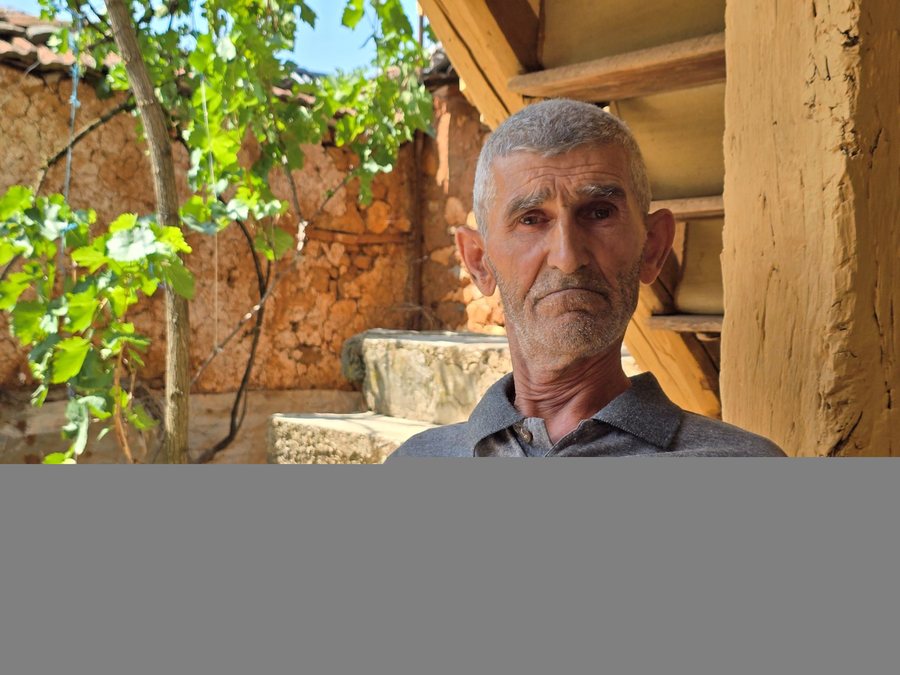
Agim Miftari, a resident of the village of Kërçisht i Epërm in Dibër, equates the residents' care for the church with the identity of the village. He told BIRN that the residents of the Islamic faith have been taking care of the maintenance of the churches for years.
"Our tradition has been that we shared joys and sorrows together, Muslims and Orthodox. It continues like this today, even though there are no more residents of the Orthodox faith left here," he says.
The village of Kërçisht i Epërm in Maqellarë preserves five Byzantine churches, known as Kral Kerçini, Shën Spahia, Shën Dhimitri, Shën Sotir and Shën Pobrazhi, the last one located on the top of the mountain. Only two of them are open and can be visited.
In the center of the village is the Church of “St. Sotir”, a simple building with a single window in the middle. Its walls, built of stones bound with mortar and lime, still bear damaged frescoes. The Church of “St. Sotir” is believed to have been built in the 13th century and was declared a cultural monument in 1970. Today, restoration work is being carried out to strengthen it.
History teacher Gazmir Sejdi says that the churches of Upper Kërçisht constitute a legacy of the Byzantine and post-Byzantine period, which documents the continuity of religious life in the Dibra area.
“Oral references and some partial excavations – in those documents and texts that I have searched – indicate that at least two of them belong to the late Byzantine period, 12th–14th centuries, while the others were built during the post-Byzantine and Ottoman-Christian period, 17th–19th centuries. These objects preserve traditional construction techniques with deep foundations and rectangular apses, without monumental elements, similar to the structures in Lower Dibra and Mat,” emphasizes Sejdi.
Zamir Koçi, a resident of Kërçisht i Epërm, also shows that the devotion to these churches has also been expressed through the concrete work of Muslim families. He says that his father, a master carpenter, helped repair the roof of the church of Shën Dhimitr, after being hired by an Orthodox man - a former resident of the village.
"These churches have also given importance to the village. People come to visit them. There are other historical objects, but the essence remains with the churches. To make them more functional for the village, investments would be needed in reception structures, as well as a better organization of local infrastructure. We still have sewage in the canals," he says.
The residents of Kërçisht believe that in addition to their historical and religious values, the churches can also serve as a source of development for the village through tourism.
"These old churches could help the village become better known. Many tourists come from different countries of the world, but unfortunately we do not have reception structures like guesthouses or small restaurants to serve visitors," Agim Myftari tells BIRN.
"If more were invested in infrastructure and organization, these religious sites could also contribute to the village's household economy," he added, noting the potential that cultural heritage and religious coexistence have for the development of the area. /BIRN/
